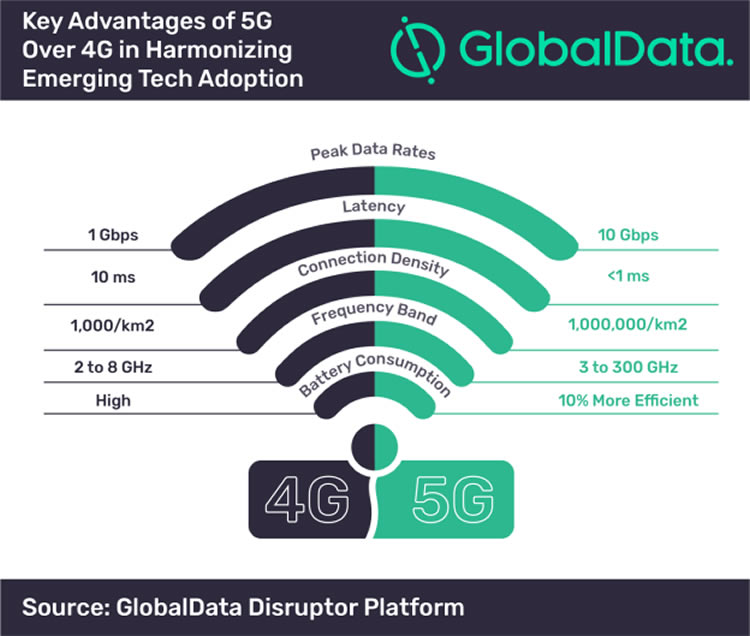Tech/games journalist with 10 years of experience. Keen interest and proficiency in IoT, Wearable technology, Fitness technology, Technology that improves the lives of the disabled, iOS apps/games and Apple hardware.

Recent analysis by GlobalData has examined just how far reaching 5G's capacity could extend to when it comes to changing the technological landscape.
At the crux of the matter, the data and analytics company believes that 5G will drive effective adoption of emerging technologies in coming years. Much of that is thanks to enhanced data flows and faster response times.
Disruptor Tech Database
GlobalData's Disruptor Tech Database focused on some specific areas, encompassing Internet of Things (IoT), autonomous vehicles, robotics & drones, as well as virtual reality (VR).
In the case of IoT, it looked at Swedish miner, Boliden, and its collaboration with Ericsson to deploy 5G at its Aitik mine. The mine is fitted with hundreds of sensors for industrial automation with 5G's lower latency and increased reliability ensuring a safer experience and more effective daily operations. Boliden expects a net saving annually of over €2.5m through its use of 5G networks.
In a similar safety driven way, autonomous vehicles should benefit massively from faster data transmission and extended communication range with a potentially safer experience for owners. Audi and BMW's membership to the 5G Automotive Association (5GAA) being key here.
Cloud gaming
Tying into the growing idea that cloud gaming will be a key part of the future technological landscape, GlobalData has also determined that 5G could be a potential solution for VR issues. Currently, users are required to have a fairly powerful PC to run and store VR games effectively, which limits how mainstream such forms of gaming can become. A form of cloud gaming could change this substantially, providing 5G can offer the bandwidth and speeds.
Such improved response times is also likely to benefit robotics and drones, with robots able to process more data in real-time thereby learning faster and adapting more quickly. Increased bandwidth should also enable drones to shoot live 4K or 360-degree videos through their cameras, changing how people view the world.
Archi Dasgupta, Director of Disruptive Tech at GlobalData, is understandably cautious about such things so far, though.
"While the commercial adoption of 5G for broader industrial applications is expected to take off in the early 2020s, its mainstream adoption could take longer due to several hurdles–the most crucial being cost," he explained.
That's a fair point. Besides the costs required of network operators to replace the existing infrastructure, there's also the individual cost of buying new handsets, routers, and other devices.
Still, it seems likely that the gradual implementation of these technologies is sure to come. The early 2020s in particular are going to be a fascinating time for technological developments.
50% off Lyca Mobile’s Pay As You Go plans
Lyca Mobile’s cheap Pay As You Go deals include roaming and international minutes.









